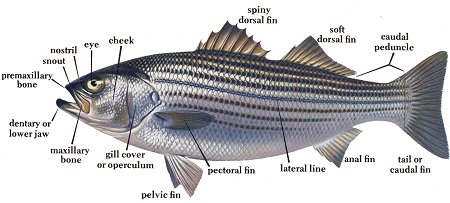Jon Lines
A Jon line is a cord used to secure yourself to the anchor line during your safety or decompression stops. This relieves you of having to hold on by hand, which can get tiring for long hangs in a strong current. You can also use a Jon line to get away from the crowd at 15 ft, while still being securely tethered to the boat.
There are a number of prefabricated Jon lines on the market that you can buy, along with several different gadgets to attach it to the anchor line, most of which are clever but not particularly reliable. For a few dollars, you can build a much better Jon line with parts from the hardware store. What you will need is:
- 6 ft of bungee cord - the kind with a fabric casing
- 2 brass snaps
- 6-8 wire ties
You can probably imagine how to assemble this - just attach a snap at each end of the cord with several wire ties. To use it, simply attach the snap at one end to yourself, and wrap the other end several times around the anchor line ( to keep it from sliding, ) pull it tight and maybe knot it, and snap it to itself. You can easily push this up or down the anchor line by hand to change your depth, but otherwise, it should stay where you place it.
There are a number of advantages to this rig:
- The bungee cord is tangle-free and easy to handle, yet packs up quite small in a pocket.
- The attachment works for all sizes of anchor line, and although it may slip a little, it cannot fail completely, leaving you adrift like an open hook can.
- The elastic bungee material will soak up all the shocks on the anchor line as the boat heaves, leaving you placidly floating alongside. A typical nylon Jon line will jerk you all over the place on a rough day, while holding on by hand can pull your shoulder out.
If the 6-foot length seems like too much for your conditions, just tie a big loop to shorten it.
DIR
What's a Jon Line ?

